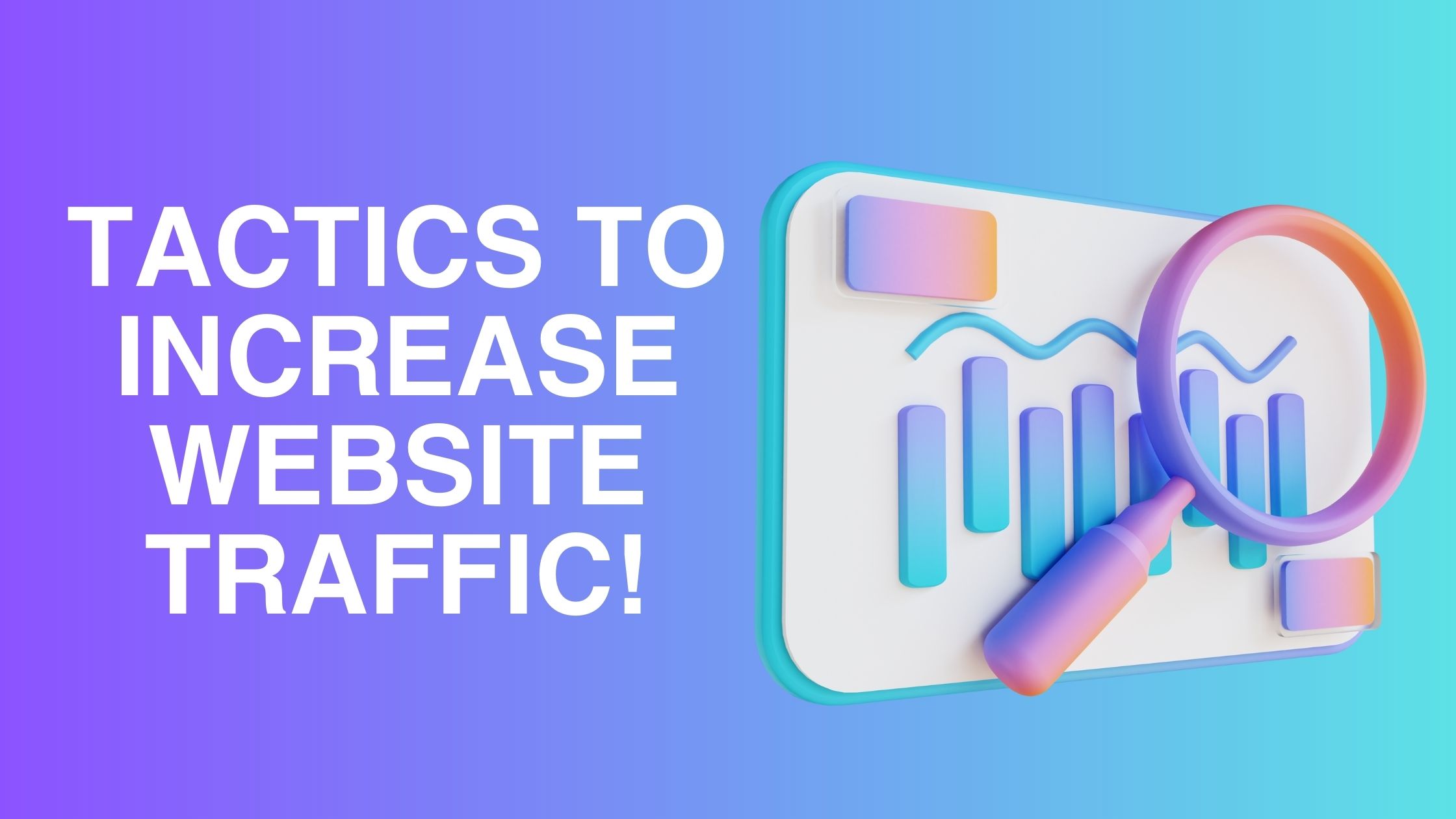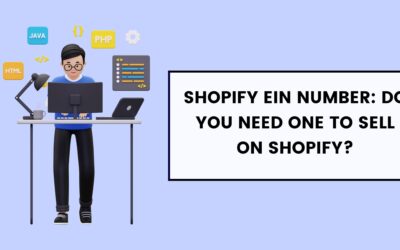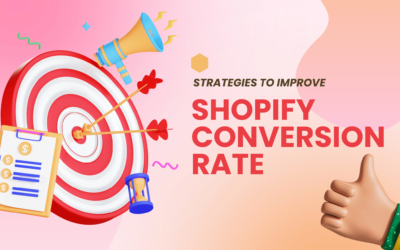Mastering E-commerce: Tactics to Significantly Increase Website Traffic
The Importance of Increasing E-commerce Website Traffic
In the fast-paced, hyper-competitive world of e-commerce, every click counts, every visitor matters, and every conversion is a victory.
Your online store’s lifeblood is traffic— specifically, targeted, high-quality traffic that is primed to purchase.
Welcome to the epic journey of mastering ecommerce, where Every successful e-commerce journey begins with a single step: driving traffic. But how do you amplify your reach in a vast digital marketplace? Sit tight as we guide you on this transformational journey toward e-commerce mastery.
In this comprehensive guide, we will delve into proven tactics to boost your website traffic exponentially. Unravel the art of digital attraction, uncover strategies that draw customers like a magnet, and become proficient in converting casual browsers into committed buyers.
We’ll navigate through strategies such as SEO optimization, paid advertising, influencer engagement, content marketing, and a valuable bonus from the famous Traffic Secrets book, to name just a few.
It’s time to conquer the e-commerce space!
Let’s embark on this exciting journey and answer the burning question: How can you significantly increase e-commerce website traffic?
Stay with us, as this promises to be a journey worth taking for anyone eager to thrive in the e-commerce arena. Let the exploration begin!
Ecommerce Traffic Explained
What is Ecommerce Traffic?
Ecommerce traffic refers to the number of individuals who visit your online store or website. It could be through various channels such as organic searches, paid advertising, social media, email marketing, direct traffic, or referrals from other websites. These visitors are potential customers who, once on your site, may browse your products, make purchases, or engage with your content, contributing to your store’s overall success. Understanding and analyzing your eCommerce traffic can help you devise strategies to attract more visitors and convert them into loyal customers.
Why is Traffic Vital for Your E-commerce Store?
- Increased Potential for Sales: The more visitors you have, the greater the chance of conversions and sales. Every visitor to your site is a potential customer who could make a purchase.
- Brand Awareness: High traffic volume can significantly increase your brand’s visibility and recognition. Even if visitors don’t make a purchase on their first visit, they will become aware of your brand, and the likelihood of future purchases increases.
- Valuable Customer Insights: Traffic data can provide important insights into customers’ behaviors, preferences, and needs. This can help you refine your marketing strategies and personalize your offerings.
- SEO Benefits: More traffic often leads to improved search engine rankings. Search engines view high-traffic websites as more credible and relevant, which can boost your organic ranking.
- Advertiser Appeal: High traffic numbers can attract quality advertisers if you decide to monetize your site through advertising.
Now that we’ve defined e-commerce traffic and highlighted its importance, let’s delve into effective strategies to increase your website’s traffic significantly. These strategies range from optimizing your site for organic search to harnessing the power of social media and email marketing – all aimed at helping you master ecommerce traffic.
Organic Traffic Strategies
In the digital landscape, organic traffic – visitors that land on your website due to unpaid (“organic”) search results – is a vital cog in the machine of e-commerce success. Let’s delve into some key strategies that can help you boost this essential type of traffic. (1)
SEO Techniques for Ecommerce
Effective SEO (Search Engine Optimization) is a cornerstone of any successful e-commerce website. Here’s what you need to focus on:
- Keyword Research: Identify the terms your potential customers use in their online searches. Tools such as Google’s Keyword Planner, Moz, and SEMrush can help you.
- On-Page SEO: Ensure your product descriptions, meta tags, and content contain relevant keywords. However, avoid keyword stuffing, as it can negatively impact your SEO.
- Technical SEO: Ensure your website loads quickly, is secure (HTTPS), and offers a good user experience. Google and other search engines prioritize these factors in their ranking algorithms.
Architecture, Links, and General Content
Your site’s architecture, the links it contains, and the quality of your content play a significant role in driving organic traffic.
- Website Architecture: Make your site easy to navigate. A clear, logical site structure helps search engines understand your content and helps users find what they’re looking for more quickly.
- Internal and External Links: Internal links (linking to your content) help search engines understand the context and relationship between different pages on your site. External links (linking to other relevant sites) can boost your site’s credibility.
- Quality Content: Content is king. Regularly publish high-quality, relevant, and original content that provides value to your audience. This improves your search rankings and helps establish your brand as an authority in your niche.
The Power of Long-tail Keywords and Rich Snippets
Long-tail keywords are specific, often longer phrases that customers use when they’re closer to making a purchase or using voice search. They’re a golden opportunity to draw in targeted, high-conversion traffic.
Rich snippets are structured data markups that site operators can add to their existing HTML. They provide search engines with additional information about your content, leading to more informative search results for users and potentially higher click-through rates for you.
Importance of Mobile Optimization
With more and more shoppers using mobile devices, optimizing your ecommerce site for mobile is crucial. A mobile-friendly site improves the user experience for mobile visitors and positively impacts SEO, as Google uses mobile-first indexing.
Paid Traffic Strategies
While organic traffic strategies lay the foundation for your online store’s visibility, paid traffic strategies are the turbocharge that can propel your ecommerce site to new heights. Let’s explore these paid strategies that are critical to increasing e-commerce website traffic.
The Role of Paid Social Media Ads
In today’s interconnected world, social media platforms offer an unrivaled opportunity to reach your target audience.
- Facebook Ads: With detailed targeting options, Facebook allows you to reach a specific audience, likely to be interested in your products. From demographics to interests and behaviors, you can customize your audience precisely.
- Instagram Ads: As a visual platform, Instagram is perfect for showcasing your products. With shopping tags, users can directly purchase from your posts, making it a powerful tool for driving e-commerce traffic.
- Pinterest Ads: Pinterest’s user base often uses the platform for inspiration and planning, making it a goldmine for e-commerce businesses. Promoted Pins can boost visibility and drive targeted traffic to your site.
Exploring Google Ads and PPC Advertising
Google Ads is a powerful platform for ecommerce businesses. You can target keywords related to your products and only pay when someone clicks on your ad (Pay-Per-Click or PPC).
Key aspects to focus on include:
- Quality Score: Google rates the quality and relevance of your keywords and PPC ads, impacting your cost per click (CPC). Higher Quality Scores can lead to lower costs and better ad positions.
- Match Types: Choosing the right keyword match type can help you reach a wider audience (Broad Match) or target a more specific group of customers (Exact Match or Phrase Match).
- Remarketing: With remarketing, you can target people who have already visited your website but have yet to purchase. It’s a powerful way to increase conversions by reminding potential customers about your products.
Key Features of Google Shopping
Google Shopping is a dedicated service from Google that allows users to search for, view, and compare products. As an ecommerce store, you can leverage Google Shopping Ads to boost product visibility.
- Optimizing the Feed: Your product feed is the foundation of your Google Shopping campaigns. For better results, ensure accurate and high-quality product data, including title, description, price, and images.
- Product Ratings and Reviews: Google Shopping displays ratings and reviews, which can significantly influence purchase decisions. Encourage happy customers to leave reviews to boost your credibility.
Social Media and Influencer Marketing
Harnessing the potential of social media can significantly impact your e-commerce website traffic. Let’s explore how to effectively use social media platforms and influencer marketing to drive traffic to your site.
Utilizing Various Social Media Platforms: Facebook, Instagram, Pinterest, TikTok
Each social media platform comes with its unique benefits:
- Facebook: An established platform with a broad demographic, Facebook allows businesses to interact with customers through comments, reviews, and Messenger.
- Instagram: A highly visual platform that’s perfect for showcasing your products. Use shoppable posts, stories, and IGTV to engage with your audience and drive traffic.
- Pinterest: Ideal for businesses with visually appealing products, Pinterest’s pins and boards allow users to plan purchases and discover new brands.
- TikTok: This rapidly growing platform is excellent for reaching younger audiences. Utilize creative short videos to promote your products and boost your brand visibility.
The Impact of Influencer Marketing
Influencer marketing is a potent tool in the digital age. Collaborating with influencers in your niche can significantly boost your reach and credibility:
- Instagram Influencers and YouTubers: These content creators have established audiences who trust their recommendations. Partnering with them can lead to an influx of traffic to your site.
- Blogs and Press: Getting featured in popular blogs or press in your industry can also lead to a large increase in traffic.
Engaging in Conversations and Communities on Social Media
Active participation in social media communities can not only boost your brand’s visibility but also lead to direct traffic to your ecommerce store:
- Commenting and Engaging: Respond to comments on your posts, engage with customers’ posts, and participate in the conversation. This active engagement can significantly boost your brand’s image and attract more traffic.
- Sharing and Promoting: Encourage your followers to share your content. Also, promote your e-commerce store on social media platforms to drive direct traffic.
Unveiling the Traffic Secrets Strategy
There’s no need to reinvent the wheel when navigating the labyrinth of driving traffic to your e-commerce website. One effective and tested method is implementing the strategies taught in Traffic Secrets.
What is Traffic Secrets?
Traffic Secrets is an innovative approach to online marketing, primarily encapsulated within a book by Russell Brunson. The strategy goes beyond the usual tactics and delves deeper into the nuances of driving traffic. It presents a holistic framework that covers not just how to attract visitors but also how to convert them into loyal customers. (1)
The Core Principles of Traffic Secrets
Traffic Secrets operates on a few key principles:
- Understand Your Dream Customer: Identifying and understanding your dream customer is the cornerstone of Traffic Secrets. It emphasizes the importance of knowing who your customer is, where they hang out online, and their core pain points.
- The Three Types of Traffic: Traffic Secrets categorizes online traffic into three types: traffic you control, traffic you don’t control, and traffic you own. By understanding these distinctions, you can better strategize your efforts.
- Filling Your Funnel: The book explains how to fill your sales funnel with your dream customers effectively. It offers strategies like ‘The Dream 100’ to identify the top 100 influencers in your niche.
Implementing Traffic Secrets in Your E-commerce Store
Reading the Traffic Secrets book and implementing its advice will dramatically enhance your e-commerce store’s visibility. You’ll learn how to connect with potential customers, drive them to your website, and convert them into repeat customers. Moreover, you’ll discover how to anticipate market shifts, future-proof your business, and make your online presence stand out in a saturated market.
If you want to take your E-commerce store to the next level, Traffic Secrets is your roadmap to phenomenal growth.
Content and Email Marketing: Powering Up Your Ecommerce Traffic
Harnessing the capabilities of content and email marketing can significantly augment your ecommerce traffic. Let’s explore how you can use these strategies effectively.
The Value of Blogs, Podcasts, and Videos
In the digital age, content is king. The type of content you produce can range widely:
- Blogs: A well-optimized blog can increase your website’s SEO value, driving organic traffic. Moreover, informative blogs that solve problems or provide key insights can establish your brand as an industry authority.
- Podcasts: An increasingly popular content format, podcasts allow you to reach new audiences. You can talk about topics related to your products, industry trends, or even invite experts for interviews.
- Videos: With platforms like YouTube and Instagram, video content is more accessible than ever. Videos are a great way to showcase your products, demonstrate their usage, or share customer testimonials. (1, 2)
Importance of Engaging Email Marketing
Even with the rise of social media, email marketing remains a powerful tool for driving e-commerce traffic. Here’s how you can use it effectively:
- Personalization: Emails tailored to individual customers based on their browsing or purchasing history can significantly boost click-through rates.
- Newsletter: Regular updates about new products, discounts, or company news can keep your brand at the top of customers’ minds.
- Automated Follow-ups: Abandoned cart emails or post-purchase follow-ups can enhance customer retention and encourage repeat visits.
The Effectiveness of Contests, Giveaways, and Time-Sensitive Discounts
Creating a sense of urgency or exclusivity can drive significant traffic to your e-commerce store:
- Contests and Giveaways: These attract visitors and encourage social sharing, amplifying your reach.
- Time-Sensitive Discounts: Limited-time offers or flash sales can spur immediate purchases and increase traffic.
Leveraging these content and email marketing strategies can substantially boost your eCommerce traffic, laying the groundwork for increased sales and customer loyalty. Remember, the key is to consistently tailor your marketing plan to your audience’s preferences and behaviors.
Website Optimization and User Experience: Keys to Driving Ecommerce Traffic
A well-optimized website with a seamless user experience is the foundation of any successful ecommerce strategy. Let’s delve into the crucial aspects you need to consider.
Ensuring Fast Loading Speed
Speed is everything online. The quicker your website loads, the better your customer’s experience. Studies show that a 2-second delay in load time can increase bounce rates by up to 103%. Here’s what you can do to speed things up:
- Optimize Images: Large, high-quality images may look appealing but can drastically slow down your site. Aim to strike a balance between image quality and file size.
- Minify Code: Minifying your website’s code can reduce load time. Many online tools can help you with this task.
- Use a Content Delivery Network (CDN): CDNs can store copies of your website on multiple servers worldwide, reducing the distance data needs to travel and improving load speed.
Importance of Clear and Engaging Images
Your product images are the first thing customers notice when they land on your website. High-quality, clear images can significantly enhance user engagement and boost sales.
- Showcase Different Angles: Offer multiple views of each product to give customers a comprehensive understanding.
- Use a White Background: A white or neutral background can highlight the product’s features without distractions.
- Include a Zoom-In Option: This allows customers to examine the product closely, increasing their confidence in purchasing.
Developing a Referral Program
Referral programs can be a potent tool to increase e-commerce traffic. By offering incentives to your existing customers to refer others, you can tap into their network and attract new customers.
- Incentivize Both Parties: Offer rewards to the referrer and the referee to encourage participation.
- Make Sharing Easy: Provide easy-to-use referral links or codes that customers can share across multiple platforms.
- Promote Your Program: Regularly remind your customers about the referral program through emails, banners on your website, or social media posts.
By focusing on website optimization and providing a superior user experience, you can turn your e-commerce store into a high-traffic hub that keeps customers returning for more. Remember, your website is the face of your brand in the digital world – make it count.
Frequently Asked Questions (FAQs): Addressing Common Concerns about Increasing E-commerce Website Traffic
We understand that driving traffic to your e-commerce website can raise several questions. Here, we address some of the most common concerns.
How Can I Increase Traffic to My Ecommerce Website for Free?
While paid strategies can be effective, there are plenty of free methods to increase traffic. These include optimizing your site for SEO, engaging with your audience on social media, creating valuable content through blogs, podcasts, or videos, and setting up a referral program.
How Effective is Social Media for Driving Ecommerce Traffic?
Social media platforms like Facebook, Instagram, Pinterest, and TikTok offer excellent opportunities to reach and engage with your audience. However, the effectiveness depends on your brand, target audience, and the quality of your social media strategy.
How Can I Use SEO to Drive More Traffic to My Ecommerce Site?
You can utilize various SEO techniques to increase your website’s visibility in search results, driving more organic traffic. This includes optimizing your site’s architecture, links, and content, leveraging long-tail keywords and rich snippets, and ensuring mobile optimization.
Are Contests and Giveaways Effective in Driving Ecommerce Traffic?
Yes, contests and giveaways can be effective as they incentivize user engagement. They can help generate buzz around your brand, increase your social media following, and attract potential customers to your website.
How Can I Optimize My Website to Improve User Experience?
Improving user experience can involve several strategies, including ensuring a fast loading speed, providing clear and engaging images, and developing a seamless navigation structure. Consider setting up a referral program to encourage customer advocacy.
How Beneficial are the Strategies from Traffic Secrets for E-commerce?
The strategies in Traffic Secrets are highly beneficial for any online business. They provide:
- Valuable insights into understanding your audience’s journey.
- Keys for creating effective sales funnels.
- Techniques to drive traffic to your e-commerce site consistently.
- Grab your free copy of traffic secrets.
Having a go-to manual by your side is an invaluable resource for any store owner looking to increase site traffic and sales.
Conclusion: Mastering Ecommerce Traffic – The Road to Success
In the dynamic digital marketplace, attracting a steady stream of visitors to your e-commerce store is no small feat. However, by adopting a blend of the right strategies, you can significantly ramp up your website traffic and, consequently, your sales.
To recap, we’ve discussed a variety of methods, including organic and paid strategies, the power of social media and influencer marketing, and the importance of engaging content and email marketing. We also highlighted the importance of user experience through website optimization and the implementation of a referral program.-
The lessons learned from Traffic Secrets offer another layer of strategic insight into driving and converting traffic. You can amplify your eCommerce success by understanding your audience, creating effective sales funnels, and leveraging the power of evergreen traffic.
Finally, remember that increasing e-commerce website traffic isn’t just about numbers – it’s about attracting the right visitors who are genuinely interested in what you offer and are more likely to convert into loyal customers.
Each e-commerce business is unique, so feel free to experiment with these strategies, analyze their effectiveness, and adapt them to align with your business goals. Stay consistent, be patient, and keep your visitors’ experience at the forefront of your efforts. The road to increased e-commerce traffic might be challenging, but the results will be worth it.
Happy selling!
Shopify EIN Number: Do You Need One to Sell on Shopify?
Shopify EIN Number: Do You Need One to Sell on Shopify?An Employer Identification Number (EIN) is...
Mastering Amazon Pricing: Strategies to Maximize Profitability on the E-
Mastering Amazon Pricing: Strategies to Maximize Profitability on the E-Commerce Giant The...
Conversion is Key: Strategies to Enhance Your Shopify Conversion Rate!
Conversion is Key: Strategies to Enhance Your Shopify Conversion Rate!Your Shopify conversion rate...








